HORSCH Live
At the end of 2021 HORSCH organised the digital event HORSCH Live for the second time. From 30th of November to 2nd of December there was a varied program consisting of expert speeches, machine presentations and panel discussions.
HORSCH again had invited speakers from different agricultural sectors to talk and discuss with them about agronomic topics, technical innovations and current trends. Everyone could participate via the live stream on the HORSCH website but also via our different social media channels.
The kick-off panel discussion was about the topic “Will the prices of soft commodities be tagged along with the commodity market?". Michael Horsch discussed with Dr. Marlen Wienert (BayWa, head of the department Agriculture/Technology), Heinrich von der Decken (agricultural management consultant) and Dr. Oliver Balkhausen (Director Economic Research ADM Germany GmbH). The discussion was presented by Guido Höner, chief editor of the magazine TopAgrar.
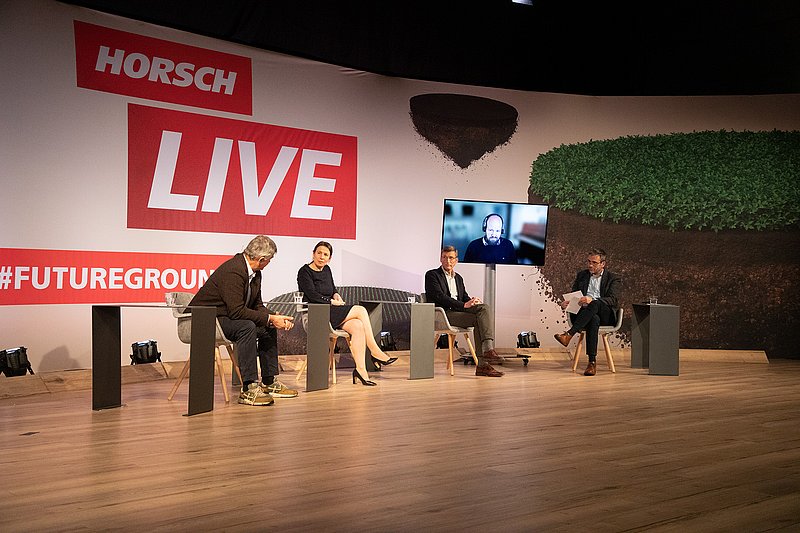
Currently, prices are rising in quite a lot of sectors. The sectors steel, construction material, wood, energy, but also fertiliser etc. are affected. In addition, because of the shortage of these commodities the prices increase even more. They also rise for cereals, rape or sugar. What are the causes for these developments? Is it perhaps only a bubble or are we facing a large-scale shortage of resources and food? An assessment of the current stock situation and the effects of the climate on the current situation also were part of the discussion.
According to Dr. Balkhausen one of the factors is that because of the close down of so many factories there were production bottlenecks in almost all sectors especially in Southeast Asia and China except for agricultural production. The result were considerable production problems all over the world because of missing parts. But we do not only feel the effects of the pandemic. The climate, too, with increasing, small-scale extremes brings about fluctuating harvest yields and thus increasing prices.
Rape as a cash crop
On the second day, HORSCH Live among others dealt with the topic of rape as a “cash crop”. Why was rape yield disappointing in many places and how can it be stabilised in 2022? For in many farms rape plays a central role in the rotation. For economic reasons, in some Central European regions rape rotation becomes tighter and tighter thus making a successful cultivation more and more difficult. The removal of various crop care components additionally complicates the profitable cultivation of rape. Rape is an important part of the rotation which in many farms is highly profitable from an economic point of view. With last year in mind when the yields in many regions at the end of the season were disappointing, we, of course, wonder what the prospects for the next harvest in 2022 are and what we can do to increase the yields again.
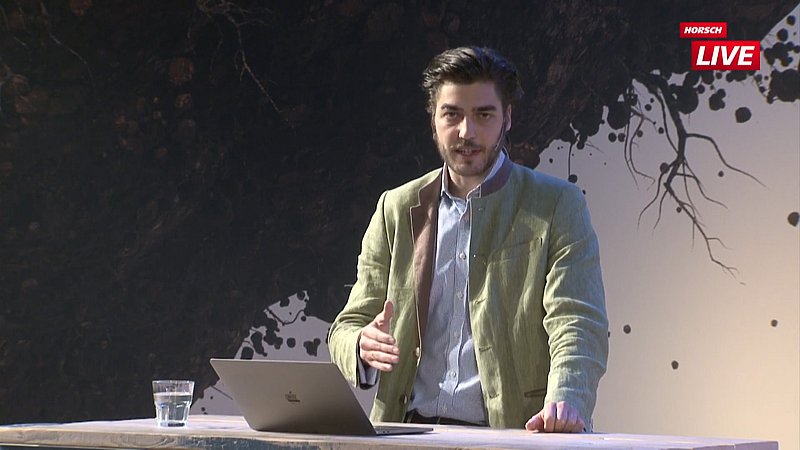
In his speech Ferenc Kornis from the N.U. Agrar GmbH dealt with these questions. He explained that rape actually was considered to be a “cash crop” really it is a problem child. It particularly suffered from different factors: on the one hand from the weather and on the other hand from the problem of rape pests like flea beetle or weevil species, but also of rotation diseases like clubroot or sclerotinia. It was also afflicted by late frosts, rain and intense heat, but also by the lack of nutrients.
“A nationwide comparison of our analysis showed that rape yield in the important cultivation areas was approx. 10 % lower”, Kornis explained. There were regions that harvested less than 3 t of rape. Rape can compensate a lot if there are less plants (25-40 plants/m2) at the beginning. This compensation capacity refers to the grain density and the thousand-seed weight (TSW). In good regions, the yield level with a TSW of 6 g and 110,000 grains/m2 amounts to about 6 t of rape. But influencing factors like extreme weather events, problems with pests or the lack of nutrients make it more difficult to achieve the yield objective. With temperatures above 35 °, like we had this year, the rape shuts down, and you only get very small grains with a low TSW. It is similar with moisture: in this case, the fine roots die off. This, too, influences the TSW and the general grain density. According to Kornis light also often is underestimated. If at the time of blossoming there is too little light, too few pollens are generated and thus pollination is not optimum.
“The sowing conditions in autumn 2020/2021 actually were rather good. October was humid-wet, November dry-mild. In most regions the roots were well developed. The problem was that December, too, was rather mild, and the rape continued to grow. Though this is an advantage for late seeds, it is a disadvantage for early seeds. For if rape continues to grow it continues to need nutrients. In regions where for example nitrogen is scarce anyway, there simply is none left. In this case, rape slowly turns purple. If this happens, especially as of the eight-leaf-stage you know that the rape is starving, and you will lose buds at an early stage”, Kornis commented.
Rain during the blossoming of the rape this year favoured sclerotinia. Because of the combination of one very cool day (below 10 °C) and a very hot day (above 34 °C) shortly after that the deposit of the grain was not good and finally the TSW was low. Till this stage the population was green and rich. The sudden heat made everything turn yellow. To secure rape yields for next year, you have to prevent another reduction of buds, shoots and siliquae, fight diseases and pests correctly in due time and secure the nutrient supply despite the currently high nitrogen prices.
Kornis recommends placing yellow traps at the right spot in spring to be able to react to a weevil infestation in due time – for cabbage stem weevils at the field boundaries near hedges and forest edges, for stem weevils in and near neighbouring rape fields from last year. To counteract the flea beetle in the future, you should rather sow earlier and thinner. For most of the damage is not caused by leaf damage but by oviposition. “If the plant is strong with a thicker leaf stalk, the larva eats longer and does not move into the rape stem. A large plant can tolerate more larvae and still compensate quite well – and even generate yield. A thin plant that has been sown late has almost no reserves, and the flea beetle simply eats through it. In this case, one to two flea beetle larvae are enough“, Kornis said.
One solution to recognise the lack of nutrients at an early stage is plant analysis. It is best to carry it out in the autumn. Thus, you can see at an early stage where there are problems. Micronutrients like for example molybdenum are important for the nitrogen utilisation in the plant. If there is a lack of micronutrients, nitrogen efficiency decreases, too. This is why a regular analysis of the micronutrient supply makes sense. It is important to not let the rape starve. When asked how you can recognise the right starter input, Kornis answered: “If rape starts to turn purple early, you know that there already has been a nitrogen shifting. You can then, depending on the site, apply a high quantity of N, i.e. 100 kg/ha of nitrogen, to make sure that the rape does not continue to starve. For an early sown rape has to be pushed and needs nitrogen at an early stage.”
The breeding objectives of the future
The speech of Dr. Hubert Kempf (SECOBRA GmbH) about the topic “Challenges of wheat breeding in the future” also provided interesting insights. The question mainly was which breeding objectives you have to pursue in 2022 to be up to date in 2030. Breeding objectives are a very long-term process. From the crossbreeding of varieties over the preparation of the variability of the selection to the value analysis and variety approval it takes approx. 10 to 14 years. Wheat breeding is particularly preparing for challenges and problems with regard to the reduction of crop care agents and the use of fertiliser, to drier and warmer vegetation periods (heat respectively drought stress) because of the climate change and to the increase of organic farming. There already are approaches like resistance breeding, organic quality as well as heat and drought stress-resistant varieties. To have solutions and varieties ready in 2030, we have to think about it today. Societal and political developments but also the climate change determine the breeding objectives for the future.
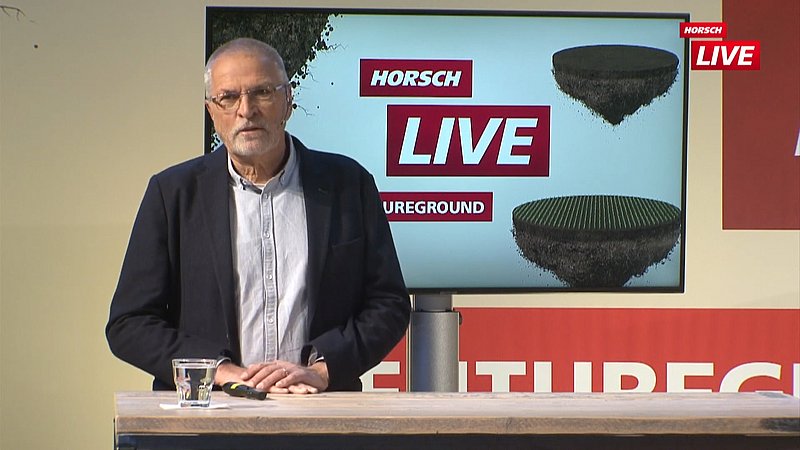
Dr. Kempf explained some important basic requirements to be able to breed at all, e.g. a sufficient variability in the gene pool of the respective species. Not every breeding advantage is profitable for the farmer. Some objectives can be realised more favourably with technical or crop production solutions. The breeders mainly try to include yield stability and the adaption to the climate change into the variety material. This can be achieved by a multi-year selection in different locations and in different climate regions. These are the requirements that allow for providing the farming sector with regionally adapted varieties.
Resistance breeding is particularly successful. Some varieties, e.g. “Kastell”, show an excellent resistance to diseases. There were hardly any yield differences in the tests with untreated and treated versions. “Without growth regulators and fungicides, we harvested last year an average of all value analyses of more than 10 t/ha. In my opinion, this is an enormous success of resistance breeding“, Kempf said. An approach to reduce fertiliser could be to carry out a selection with regard to nitrogen efficiency or to rely on varieties with a high protein quality. In this case, however, you have to consider that a high quality might generate a lower grain yield. And the market has to appreciate this. In Germany, there currently are 18 breeding programs for winter wheat. They are mainly run by medium-sized breeders. Dr. Kempf emphasised that their work guarantees that enough new variety material is created that is suitable for different sites.
Microorganisms in agriculture
Microorganisms also play a major role in agriculture. But not only in this sector: They are the basis of the whole life on earth. Every creature – man, animal or plant – has its own microbiome. There is no spot in the world where you do not find any microorganisms. Even in extreme regions and surroundings, e.g. in hot springs, where there is no other life you can find microorganisms.
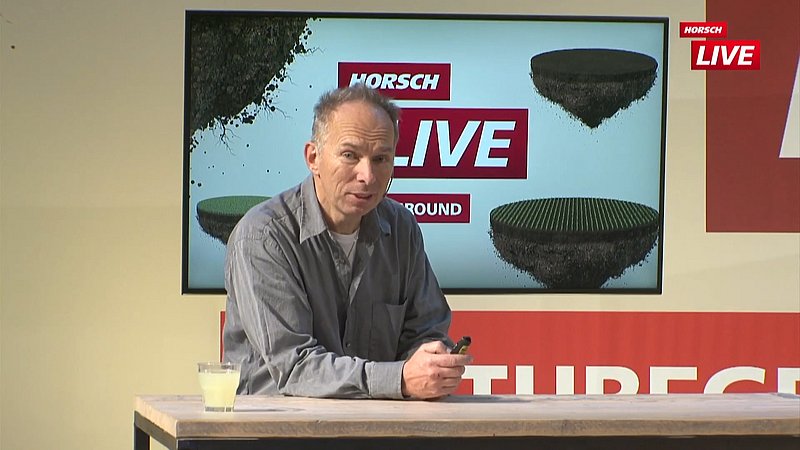
Microorganisms are not only bacteria or fungi, algae also belong to this group. Or how Prof. Michael Schloter explains it: “Everything that is smaller than 50 micrometres and is not visible to the naked eye.” In one gramme of soil live more microorganisms than people on earth. In his speech he explained the meaning of the microbiome of soils for the quality of plants and for human health. In the soils, these organisms are very important for the soil quality. Especially in the agricultural context they fulfil a very important function, e.g. for the mobilisation of nutrients, the storage of carbon, the pollutant degradation in the soil or the maintenance of the quality of the groundwater. Moreover, microorganisms produce substances that act as a kind of glue and prevent erosion.
However, these smallest organisms are affected by the way we live and farm. One problem is the loss of diversity for microbiomes worldwide that we cannot regenerate again. This loss is mainly caused by an excessive use of fertiliser, but also by monocultures, crop care agents and certain kinds of animal farming. For man this means that he loses variety and thus the ecosystem services provided by the soil.
“In the plant breeding sector, we always tried to optimise the genome of the plant, but we forgot the microorganisms which are closely connected to the plant. The result was a loss of functionality. And this is why today we have to use so much fertiliser“, Schloter explained. As we now are aware of the problem, we particularly try to stabilise the microbiome in the root to restore the functionality. If you want more microbial biomass and more bacteria diversity, you have among others to regenerate the carbon supply in the soil. This leads to more resilience, stability and resistance of the fields. It might make sense to take the microbiome of seeds and take it from one region to another. The plant has to spend a lot of energy to keep a microbiome. Gradually the plant gets “lazy”. If the conditions of the plant are not optimum, the biome automatically gets more diverse as the plant generates exudations to feed the microorganisms. “You can compare it for example to a region where there are a lot of storms. People who live there build houses with more solid walls than in regions where storms are rare”, Schloter described.
The human microbiome – similar to the microbiome of the plant – is strongly influenced by the environment. In this context, Prof. Dr. Schloter also described the “One-Health concept” which says that a healthy human being lives in a healthy environment. The health of people, animals and the environment are intrinsically tied together. If the environment is not protected, pathogenic microbiomes might develop that cause diseases – for people, animals or even plants. In the past few years, we noticed an increase of infectious diseases as pathogens prevail because of the reduction of the smallest organisms in the environment. A high diversity of microbiomes, thus, also is a protection against pathogens. This is why the maintenance of the many different microorganisms is so important.
If the quality of the soil is bad, people’s health suffers, too. So there is a negative feedback loop between human health and soil quality. “We have to try to get back into a positive development. We can manage this by leaving more room to nature – in rural as well as in urban regions. In farming, we have to use the corresponding technologies to guarantee the development of an increased diversity of microorganisms. The result are healthy soils and healthy plants and thus, also a healthy life”, Schloter emphasised.
New approaches to reduce crop care with technology
Regulatory framework more and more restricts the use of crop care agents. To achieve the specified reduction objectives that are also included in the new coalition agreement, but still continue to generate good harvest yields, we need new technical and agronomic approaches. In his speech Prof. Dr. Bernhard Bauer (HSWT Triesdorf) talked about the question “What are new approaches and ideas to reduce plant protection technically?”
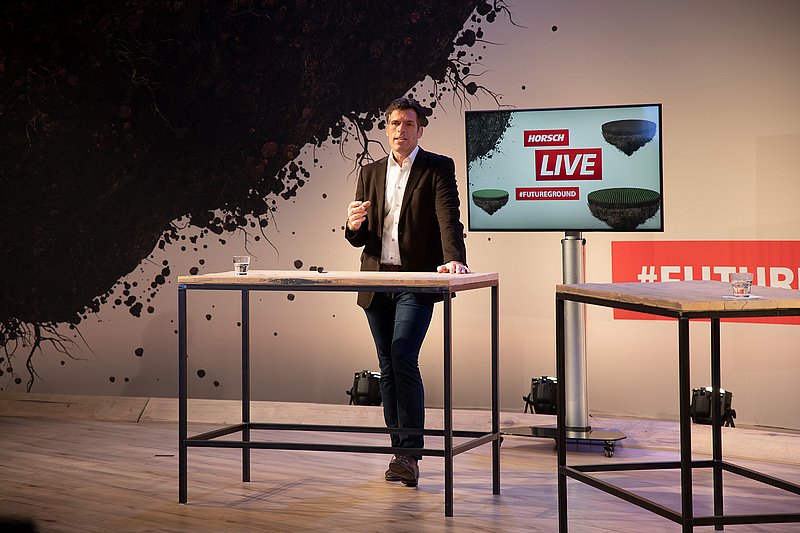
He attaches great importance to the practical feasibility of these solutions. The focus is on the practicability: What can we do? Which products can be put into practice. How can they be developed further? A solution can be a subsitution for example with mechanical crop care. Thus, you can replace herbicides by increased hoeing and harrowing. Another possibility could be the extension of rotations. Other approaches support the idea of reducing crop care agents by technology. By optimising application technologies, you can improve the adsorption, the saturation of the population or the wetting. But application technology cannot be used for every crop care measure to optimise the application rate. Technologies like infestation models or weather data can serve as a decision support to carry out crop care in a targeted and quantity-optimised way at the optimum time.
In the fungicide sector scientists currently work on a completely new concept. The idea is to no longer regard for example winter wheat as a planar crop but as a spatial crop. Wide rows are laid. With special nozzles you dive into the rows and apply the agent from the side. The advantage might be that you can hit even the lower sections of the plant more simply and safely. First tests are already carried out at the Triesdorf site.
According to Prof. Dr. Bauer there also is an enormous potential in the pulse width modulation system, in short “PWM”. Every nozzle holder at the spraying boom is able to open and close several times per second. If the ratio of closing time to opening time is 50 % half of the quantity is applied. Another big advantage is the possibility to control drop spectrum and application rate almost separately. “Sometimes we only need little water but finer drops. This can easily be realised with a PWM system and even be adapted site-specifically in the field“, Prof. Dr. Bauer explained.
There definitely is potential for development – with regard to the question how you regard your population in terms of spatial or planar crop, but also when it comes to maxing out the technical possibilities and developing them further. However, the current status also shows that there are ways how we can achieve the pre-set objectives without having to say that certain application are no longer possible.
Cameras in the crop care sector
The panel discussion with Theo Leeb (HORSCH LEEB Application Systems GmbH), presented by Michael Braun, dealt with the topic of camera systems in the crop care sector. Together with Dr. Jens König (Robert Bosch GmbH, department Smart Agriculture), Prof. Dr. Bernhard Bauer (HSWT Triesdorf) and Dr. Robin Mink (co-founder and co-managing director of SAM-DIMENSION.com) he discussed if cameras will replace the human eye in the crop care sector, if they support integrated crop care with their detection algorithms and if this technology will manage to generate significant savings potentials in crop care.
In the future, cameras with algorithms will support the human eye. But currently the focus of decision-making has to be on the farmer. For even the best camera-based technologies at the moment can only support the farmer when taking his agronomic decisions.

He attaches great importance to the practical feasibility of these solutions. The focus is on the practicability: What can we do? Which products can be put into practice. How can they be developed further? A solution can be a subsitution for example with mechanical crop care. Thus, you can replace herbicides by increased hoeing and harrowing. Another possibility could be the extension of rotations. Other approaches support the idea of reducing crop care agents by technology. By optimising application technologies, you can improve the adsorption, the saturation of the population or the wetting. But application technology cannot be used for every crop care measure to optimise the application rate. Technologies like infestation models or weather data can serve as a decision support to carry out crop care in a targeted and quantity-optimised way at the optimum time.
In the fungicide sector scientists currently work on a completely new concept. The idea is to no longer regard for example winter wheat as a planar crop but as a spatial crop. Wide rows are laid. With special nozzles you dive into the rows and apply the agent from the side. The advantage might be that you can hit even the lower sections of the plant more simply and safely. First tests are already carried out at the Triesdorf site.
According to Prof. Dr. Bauer there also is an enormous potential in the pulse width modulation system, in short “PWM”. Every nozzle holder at the spraying boom is able to open and close several times per second. If the ratio of closing time to opening time is 50 % half of the quantity is applied. Another big advantage is the possibility to control drop spectrum and application rate almost separately. “Sometimes we only need little water but finer drops. This can easily be realised with a PWM system and even be adapted site-specifically in the field“, Prof. Dr. Bauer explained.
There definitely is potential for development – with regard to the question how you regard your population in terms of spatial or planar crop, but also when it comes to maxing out the technical possibilities and developing them further. However, the current status also shows that there are ways how we can achieve the pre-set objectives without having to say that certain application are no longer possible.
Cameras in the crop care sector
The panel discussion with Theo Leeb (HORSCH LEEB Application Systems GmbH), presented by Michael Braun, dealt with the topic of camera systems in the crop care sector. Together with Dr. Jens König (Robert Bosch GmbH, department Smart Agriculture), Prof. Dr. Bernhard Bauer (HSWT Triesdorf) and Dr. Robin Mink (co-founder and co-managing director of SAM-DIMENSION.com) he discussed if cameras will replace the human eye in the crop care sector, if they support integrated crop care with their detection algorithms and if this technology will manage to generate significant savings potentials in crop care.
In the future, cameras with algorithms will support the human eye. But currently the focus of decision-making has to be on the farmer. For even the best camera-based technologies at the moment can only support the farmer when taking his agronomic decisions.
You can find out more about the HORSCH Live topics at www.horsch.com/en/live.